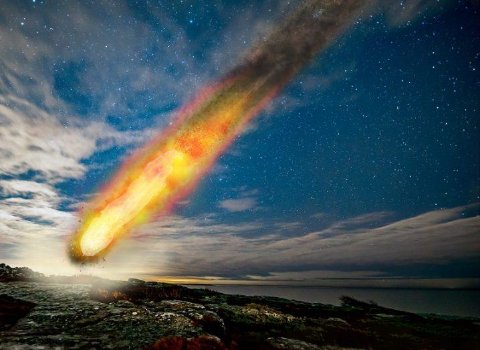Despite suggestions that meteorite craters could host deep microbial communities on Earth – or even on other planets – there has been no direct evidence to prove it. However, a team of researchers led by Henrik Drake of Linnaeus University in Sweden has found evidence for microbial activity deep within Europe’s largest meteorite crater.
The Siljan crater, located in the centre of Sweden, is more than 50km in diameter and was formed by an impact 400m years ago. The area has seen a number of drilling attempts for natural gas and now the team was able to show from core samples the existence of microbes.
“We examined the intensively fractured rock at significant depth in the crater and noted tiny crystals of calcium carbonate and sulphide in the fractures. When we analysed the chemical composition within these crystals it became clear to us that they formed following microbial activity,” Drake said.
“Specifically, the relative abundance of different isotopes of carbon and sulphur within these minerals tells us that micro-organisms that produce and consume the greenhouse gas methane have been present, and also microbes that reduce sulphate into sulphide. These are isotopic fingerprints for ancient life.”
The team’s study was published to Nature Communications.
Microbes on Earth and beyond
Violent events such as a meteorite impacts provide both the space for microbial communities through intense fracturing and the heat to drive fluid circulation for deep ecosystems. The team said that such events on otherwise geologically dead planets may have served as rare havens for life with considerable astrobiological implications.
Nick Roberts of the British Geological Survey, who co-authored the study, said that newly developed radioisotopic dating techniques were applied to the tiny crystals to determine they formed between 22m and 80m years ago. He added that the microbes may have lived for up to 300m years after the initial impact.
The findings show that further investigation is needed to understand the link between the impact and colonisation.
Drake added: “At Siljan, we see that the crater is colonised but that it has mainly occurred when conditions such as temperature became more favourable than at the impact event.
“The impact structure itself, with a ring zone of down-faulted Paleozoic sediments, has been optimal for deep colonisation because organics and hydrocarbons from shales have migrated throughout the fractured crater and have acted as energy sources for the deep microbial communities.”
This, he said, confirms that impact craters are favourable microbial habitats on Earth and perhaps beyond.
Colm Gorey
This article first appeared on www.siliconrepublic.com and can be found at:
https://www.siliconrepublic.com/innovation/ancient-life-discovered-meteorite-crater
